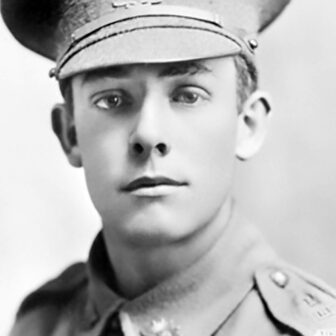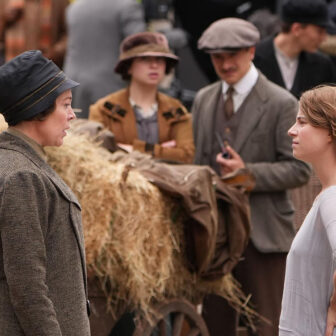Reviewing The Favourite last month I couldn’t but reflect on the cinema’s ongoing fascination with royalty and its power games. The court of Elizabeth I, in particular, has attracted filmmakers again and again, giving histrionic scope to the likes of Bette Davis, Glenda Jackson and Cate Blanchett. Elizabeth’s cousin, Mary Stuart, has had fewer cinema outings, most notably drawing on the talents of Katharine Hepburn and Vanessa Redgrave. Their stories come together in Mary Queen of Scots.
The tensions between the two women have been fodder for theatre and opera as well as film. It was German polymath Friedrich Schiller’s verse play Maria Stuart (1800) that first portrayed the irresistible but non-existent meeting between Mary and Elizabeth at Fotheringhay Castle. That highlight of Schiller’s play, which is currently being performed at London’s Almeida Theatre, is certainly my most vivid memory of the 1958 production at the Old Vic. It is also the dramatic climax of Gaetano Donizetti’s opera Maria Stuarda, which had its premiere at La Scala, Milan, in 1935, and has since been a regular in the world’s most famous opera houses. As the famous line from John Ford’s The Man Who Shot Liberty Valance goes, “When the legend becomes fact, print the legend.”
Mary Queen of Scots is the first film for director Josie Rourke, whose prolific theatre background includes time as artistic director of London’s Donmar Warehouse, where she directed dozens of plays both classic and modern. In Mary, working from Beau Willimon’s screenplay based on John Guy’s book, Queen of Scots: The True Life of Mary Stuart, she grapples with a series of potentially dangerous historical oppositions.
The film is bookended with titles reporting historical facts, as if to persuade us of its authenticity. Rourke is also careful about dates: the first such title is “England 1587,” the year of the execution; the second, shortly after, whisks us back to “Scotland 1561,” when Mary, the Catholic widow of the French king, returns to Scotland, where she is the object of a seaside rescue.
My critical advice is not to worry too much about the minutiae of history. The drama is probably true enough in a general way, if not necessarily in detail — but it’s a film, not a historical tract. By “in a general way,” I mean Elizabeth’s growing sense of the threat posed by her Scottish cousin Mary, a threat that she can only entirely eliminate by ordering Mary’s execution.
It’s best to focus instead on the film’s core drama — the two queens in their respective realms, with their surrounding courtiers and lovers — and on how Rourke builds the tensions between the two. With such notable collaborators as production designer James Merifield and costume designer Alexandra Byrne, she works the contrast between the two women with insight and sympathy and keeps them at the forefront of our interest.
The film opens with a view from behind as Mary (Saoirse Ronan) prays. She is then stripped of her jacket to reveal a vivid red undergarment (or is it a dress?) and led to the chopping block, at which point the film cuts back to the 1561 seashore. The poignancy of her short life and its tribulations is vividly enacted in this juxtaposition, and the image of the red garment will recur at the end of the film.
Between these images, the film creates a persuasive sense of the differing worlds the two women inhabit, adeptly rendered by John Mathieson’s camera. Away from the seashore, Mary is seen proudly seated on horseback as she and her followers make their way through desolate, hilly country to the gloomy Holyrood Palace, where she hugs the half-brother from whom she has been separated during her sojourn in France. In the much grander English court, Elizabeth (Margot Robbie), in chilly discussion with advisers, learns of Mary’s return.
Rourke moves the film back and forth between the two strong-minded women, each determined not to be constrained by gender, their insistence making the film very timely for the proponents of #MeToo. But the film’s real strength derives from its two central performances: it could scarcely have done better than the Irish Ronan and the Australian Robbie to carry the narrative’s weight. Ronan in particular, beneath a touching simplicity, conveys a determination to have what she believes is her due; Robbie strikingly incarnates the command of a woman who has always had her way. In a film based on oppositions of various kinds, theirs provides the spine.
Each is surrounded by hordes of scruffy males whose facial growths can make them difficult to distinguish. From time to time it’s possible to distinguish, say, Guy Pearce as Lord Burghley or David Tennant as Presbyterian reformer John Knox, who is apt to denounce Mary from the pulpit as a “harlot.” These and other actors could have been given more to work with in the interests of clarifying the dangerous oppositions — Scotland vs England, Catholicism vs Protestantism — that billow around the regal pair.
The film’s design and lighting sharply render the contrasts between the two countries. Scotland is made to appear both gloomier and less confined than England, where life seems chiefly lived in lavish interiors. We witness a border skirmish and several armed encounters, and the film is not without ideas, but its real potency is in the conflict that can only end tragically for one of these formidable women. Rourke’s stars are more than equal to these demands. •




